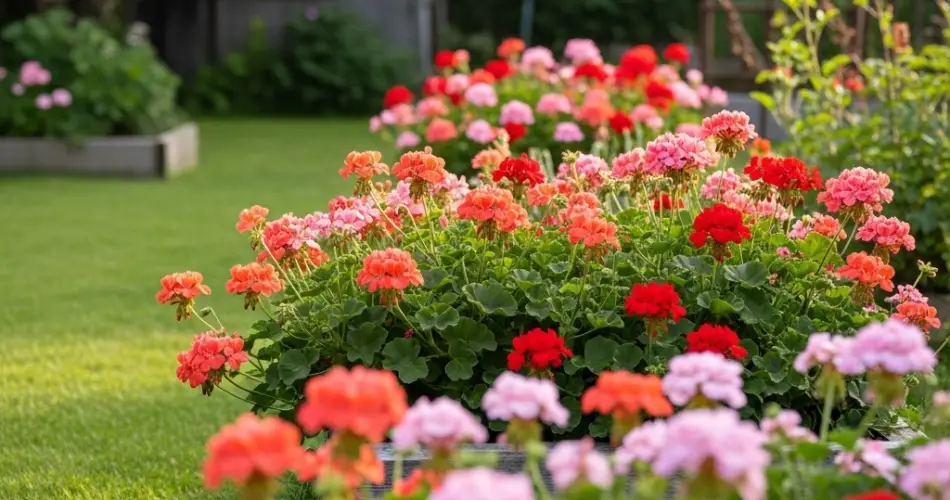Geraniums are vibrant, hardy flowering plants that add color and charm to any garden. Known for their bright blooms and aromatic leaves, geraniums are favorites among gardeners of all experience levels. The great news is that germinating geranium seeds in your backyard can be simple and straightforward—even for beginners. With a bit of guidance, you can enjoy healthy, blooming geraniums with minimal effort.
This article will guide you through the easiest and most effective steps to germinate geranium seeds successfully in your backyard, ensuring a hassle-free experience.
Why Grow Geraniums from Seed?
Starting geraniums from seed offers several advantages:
-
Cost-effective: Seeds are inexpensive compared to buying mature plants.
-
Variety selection: You can grow unique or heirloom geranium varieties not commonly found in nurseries.
-
Satisfaction: Watching plants grow from seed is rewarding and educational.
-
Control: You decide when and how to plant, ensuring optimal conditions for growth.
Choosing the Right Geranium Seeds
Before starting, choose high-quality seeds from a reputable supplier. Look for:
-
Fresh seeds: Older seeds may have reduced germination rates.
-
Variety: Select types suitable for your climate and garden conditions—zonal, ivy, scented-leaf, or regal geraniums.
-
Seed treatment: Some seeds benefit from soaking or scarification before planting; check the seed packet instructions.
Preparing Your Backyard for Germination
Geraniums prefer sunny spots and well-drained soil. Prepare a small seed bed or use containers outdoors, depending on your backyard space and climate.
-
Select a sunny location: Geraniums need at least 6 hours of direct sunlight daily for healthy growth.
-
Soil preparation: Loosen the soil and mix in compost or organic matter to improve drainage and fertility.
-
Clear debris: Remove weeds, rocks, and other debris to provide a clean seedbed.
Germinating Geranium Seeds Step-by-Step
Follow these simple steps for hassle-free germination:
-
Timing: Sow seeds in early spring after the last frost date for your region.
-
Soaking seeds (optional): Soak seeds overnight in lukewarm water to soften the seed coat and speed germination.
-
Sowing: Scatter seeds thinly over the prepared soil surface or in seed trays with seed-starting mix.
-
Cover lightly: Cover seeds with a thin layer (about 1/8 inch) of fine soil or vermiculite. Avoid burying them too deep.
-
Water gently: Mist the soil with water to moisten without washing seeds away.
-
Maintain moisture: Keep the soil consistently moist but not waterlogged throughout the germination period.
-
Temperature: Maintain soil temperature between 70°F and 75°F (21°C to 24°C) to encourage germination.
Germination Timeline and Care
-
Geranium seeds typically germinate within 7 to 14 days.
-
Once seedlings emerge, thin them to prevent overcrowding by snipping weaker seedlings at soil level, leaving the strongest plants about 4-6 inches apart.
-
Gradually expose seedlings to more sunlight by hardening them off—move them outdoors for a few hours daily over a week.
Transplanting Geranium Seedlings
When seedlings develop 3-4 sets of true leaves and grow sturdy, they are ready for transplanting.
-
Choose a sunny spot: Ensure the planting location receives full sun and has well-draining soil.
-
Spacing: Plant seedlings 8-12 inches apart to allow airflow and growth.
-
Planting depth: Plant at the same depth they were in the seed tray or slightly deeper.
-
Water thoroughly: After transplanting, water well to settle the soil around roots.
Ongoing Care for Thriving Geraniums
Once established, geraniums are relatively low-maintenance but benefit from regular care.
-
Watering: Water when the top inch of soil feels dry. Avoid overwatering as geraniums dislike soggy soil.
-
Fertilizing: Feed plants every 4-6 weeks during the growing season with a balanced, water-soluble fertilizer.
-
Deadheading: Remove spent flowers to encourage continuous blooming.
-
Pest control: Watch for aphids, whiteflies, or spider mites. Treat infestations early with insecticidal soap or neem oil.
Tips for Success and Avoiding Common Issues
-
Avoid excessive moisture: Overwatering leads to root rot and fungal diseases.
-
Provide airflow: Space plants adequately to prevent mildew and other diseases.
-
Watch for frost: Geraniums are frost-sensitive. Protect young plants if a late frost is expected.
-
Use mulch: Mulching helps retain moisture and suppress weeds but keep it away from the plant stems.
Benefits of Growing Geraniums in Your Backyard
-
Bright, long-lasting flowers add color and curb appeal.
-
Fragrant leaves can repel certain pests naturally.
-
Geraniums attract pollinators such as bees and butterflies.
-
Easy propagation for expanding your garden.
Summary
Germinating geranium seeds in your backyard is a simple and enjoyable gardening project. By choosing quality seeds, preparing your soil well, and following the steps for sowing and care, you can effortlessly grow vibrant, healthy geraniums. With regular watering, fertilizing, and pest management, your geranium plants will reward you with stunning blooms throughout the growing season.
Whether you’re a beginner or an experienced gardener, this zero-hassle approach to geranium germination ensures beautiful results without stress. Enjoy the vibrant colors and sweet fragrances that only homegrown geraniums can provide!



